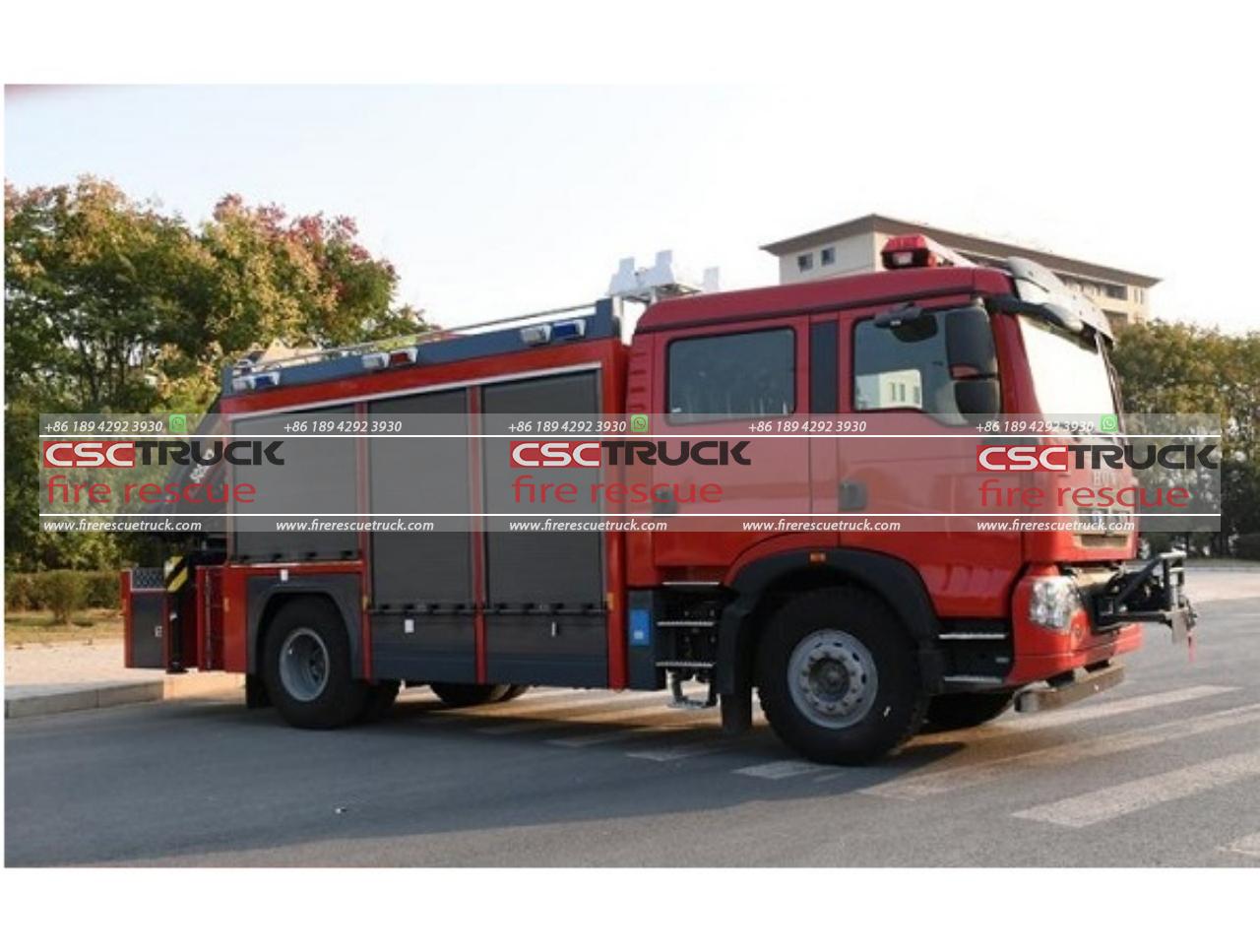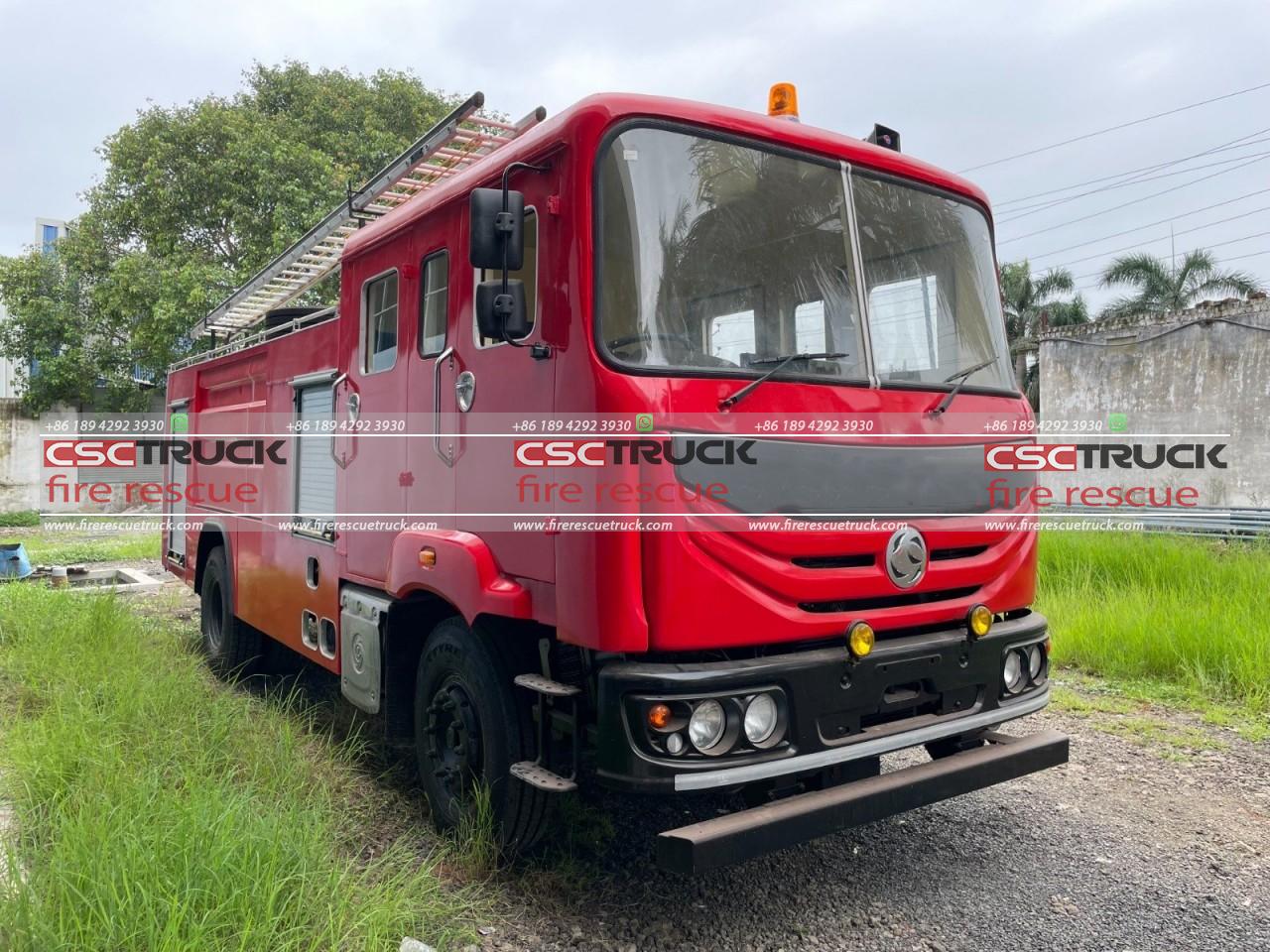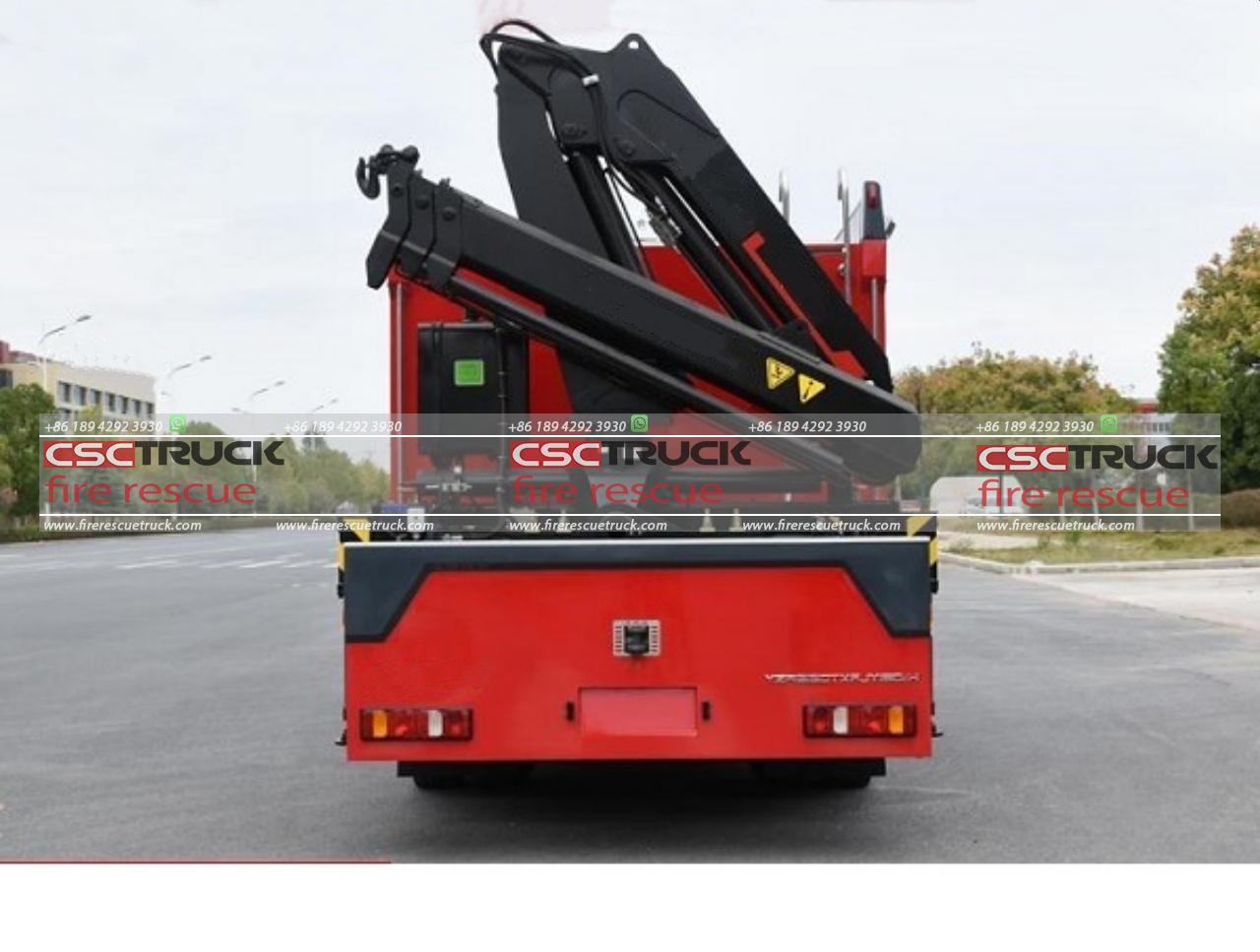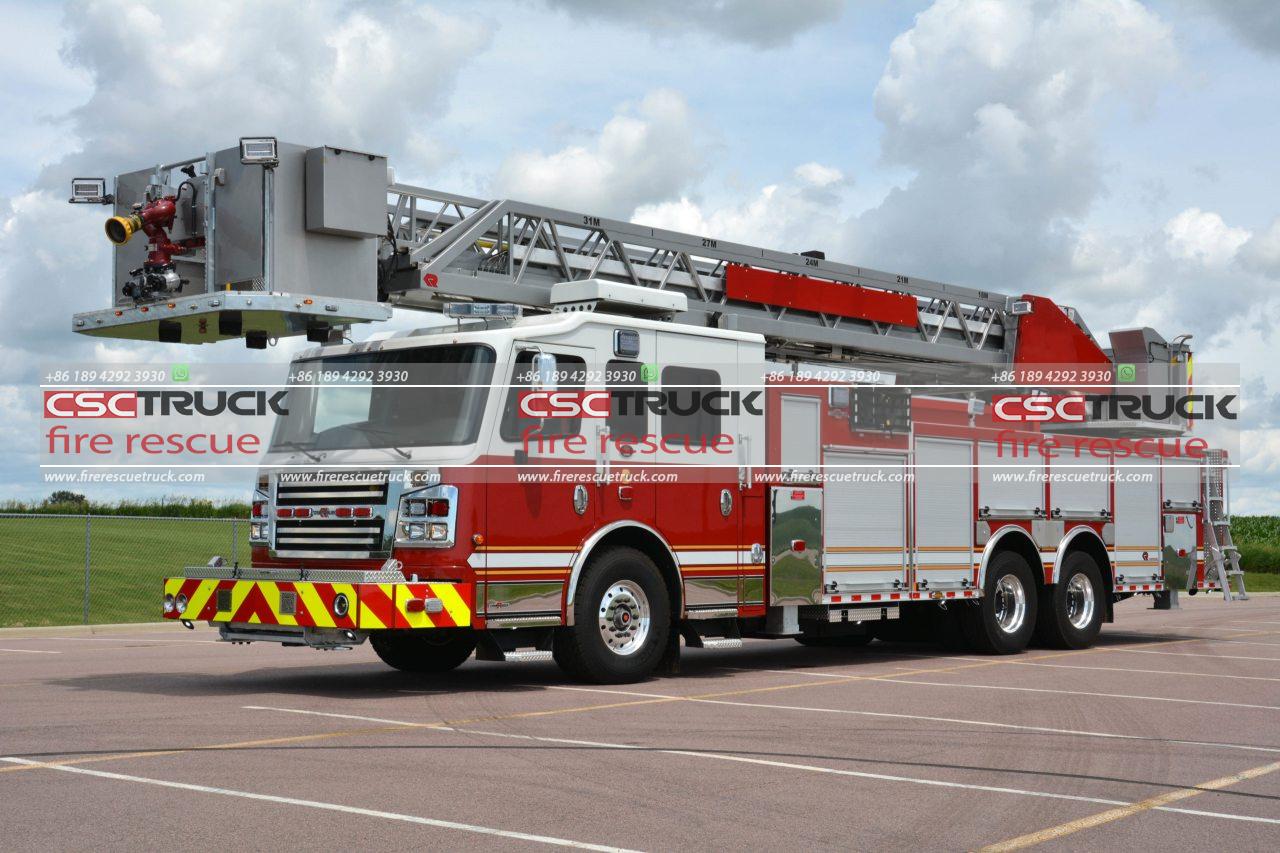Multipurpose Fire Truck: Flexible Multipurpose Fire Trucks for All-Round Firefighting
Fire trucks are an essential part of modern firefighting, serving as mobile command centers, transporters of equipment and personnel, and sources of water and other necessary resources. The evolution of fire trucks has been driven by the need for greater efficiency, flexibility, and adaptability to various types of emergencies. In this context, the concept of the multipurpose fire truck has emerged, providing a versatile and comprehensive solution for all-around firefighting.
The Evolution of Fire Trucks
Traditionally, fire trucks were designed with specific functions in mind. There were pumpers, tankers, ladder trucks, and rescue units, each serving a distinct role in firefighting and emergency response. However, as urban landscapes grew more complex and emergencies more diverse, the limitations of single-function vehicles became apparent. The need for a more versatile and efficient solution led to the development of multipurpose fire trucks.
Multipurpose fire trucks, also known as multifunctional fire apparatus, integrate various firefighting and rescue capabilities into a single vehicle. This integration not only enhances the operational efficiency of fire departments but also ensures a more rapid and effective response to a wide range of emergencies.

Key Features of Multipurpose Fire Trucks
1. Integrated Water Pump and Tank:
Multipurpose fire trucks are equipped with powerful water pumps and large-capacity water tanks, enabling them to perform as pumpers in firefighting operations. The integrated pump allows firefighters to access water supplies and extinguish fires quickly, while the tank ensures a sustained water flow even in areas without hydrants.
2. Aerial Ladders and Platforms:
Many multipurpose fire trucks come with extendable ladders or aerial platforms, providing access to high-rise buildings and other elevated structures. These features are crucial for rescuing individuals trapped on upper floors and for combating fires from above. The versatility of aerial apparatus enhances the truck’s capability to address various firefighting scenarios.
3. Advanced Rescue Tools:
Modern multipurpose fire trucks are equipped with a range of rescue tools, including hydraulic cutters, spreaders, and jacks. These tools are essential for extricating victims from vehicles involved in accidents, collapsed buildings, and other hazardous situations. The inclusion of advanced rescue equipment makes the multipurpose fire truck a critical asset in emergency response.
4. Medical Emergency Response:
In addition to firefighting and rescue capabilities, multipurpose fire trucks are often outfitted with medical equipment and supplies. This enables firefighters to provide initial medical care to injured individuals before paramedics arrive. The ability to perform medical interventions on-site can significantly improve patient outcomes in critical situations.
5. Hazardous Materials (HazMat) Response:
Some multipurpose fire trucks are designed to handle hazardous materials incidents. They are equipped with specialized containment and decontamination equipment, allowing firefighters to safely manage chemical spills, toxic releases, and other hazardous situations. This capability is essential for protecting both the public and the environment.
6. Communication and Command Systems:
Effective communication and coordination are vital during emergency response operations. Multipurpose fire trucks are often equipped with advanced communication systems, including radios, satellite links, and command consoles. These systems enable real-time communication with other emergency responders and facilitate the efficient management of resources and personnel.
Benefits of Multipurpose Fire Trucks
1. Operational Efficiency:
By consolidating multiple functions into a single vehicle, multipurpose fire trucks reduce the need for a large fleet of specialized vehicles. This streamlining of resources enhances operational efficiency and allows fire departments to respond more quickly to emergencies. It also reduces maintenance and operational costs, as there are fewer vehicles to service and manage.
2. Rapid Response:
The versatility of multipurpose fire trucks enables them to address a wide range of emergencies, from structural fires and vehicle accidents to medical incidents and hazardous materials spills. This rapid adaptability ensures that firefighters can respond effectively to any situation, improving overall response times and outcomes.
3. Cost-Effectiveness:
Investing in multipurpose fire trucks can be more cost-effective in the long run compared to maintaining a diverse fleet of single-function vehicles. The initial investment in multipurpose apparatus may be higher, but the savings in maintenance, training, and operational costs can offset this expenditure over time.
4. Enhanced Training and Preparedness:
With multipurpose fire trucks, firefighters receive training on a wide array of equipment and techniques. This comprehensive training enhances their preparedness for different types of emergencies and ensures that they can operate the equipment effectively under various conditions. The ability to cross-train on multiple functions also fosters teamwork and collaboration within fire departments.
5. Improved Safety:
Multipurpose fire trucks are designed with firefighter safety in mind. The integration of advanced technology and equipment reduces the physical strain on firefighters and minimizes the risks associated with manual operations. Features such as enclosed cabs, ergonomic controls, and safety monitoring systems contribute to a safer working environment for emergency responders.

Case Studies and Real-world Applications
Several fire departments around the world have successfully implemented multipurpose fire trucks in their operations. For example, the New York City Fire Department (FDNY) has deployed multifunctional fire apparatus to enhance its response capabilities. These vehicles are equipped with firefighting, rescue, and medical equipment, allowing the FDNY to address a wide range of emergencies efficiently.
Similarly, the London Fire Brigade has adopted multipurpose fire trucks to improve its operational flexibility. These vehicles have proven invaluable in responding to diverse incidents, including fires, road traffic accidents, and hazardous materials spills. The brigade’s investment in multipurpose apparatus has resulted in faster response times and more effective emergency management.
Future Trends in Multipurpose Fire Truck Design
The development of multipurpose fire trucks continues to evolve, driven by advancements in technology and changing emergency response needs. Future trends in multipurpose fire truck design are likely to include:
1. Electrification and Sustainable Solutions:
As the world moves towards greener technologies, the fire service is also exploring the use of electric and hybrid fire trucks. These vehicles offer environmental benefits by reducing emissions and reliance on fossil fuels. Additionally, advancements in battery technology will enhance the performance and operational range of electric multipurpose fire trucks.
2. Smart Technology Integration:
The integration of smart technology, such as IoT sensors, data analytics, and artificial intelligence, will further enhance the capabilities of multipurpose fire trucks. These technologies can provide real-time data on vehicle status, equipment performance, and incident conditions, enabling more informed decision-making and proactive maintenance.
3. Modular Design:
Modular design allows for the customization and reconfiguration of multipurpose fire trucks based on specific operational needs. Fire departments can equip their vehicles with interchangeable modules, such as water tanks, rescue equipment, or medical supplies, to suit different types of emergencies. This flexibility ensures that fire trucks remain adaptable to evolving requirements.
4. Enhanced Connectivity:
Future multipurpose fire trucks will feature enhanced connectivity options, including 5G networks and advanced communication systems. This connectivity will enable seamless communication with other emergency responders, remote monitoring of vehicle and equipment status, and access to real-time information during operations.

Conclusion
Multipurpose fire trucks represent a significant advancement in firefighting and emergency response technology. By integrating various firefighting, rescue, and medical capabilities into a single vehicle, these versatile apparatuses enhance operational efficiency, improve response times, and reduce costs for fire departments. As technology continues to evolve, the future of multipurpose fire trucks holds even greater promise, with innovations in electrification, smart technology, and modular design further enhancing their capabilities. For fire departments worldwide, investing in multipurpose fire trucks is a strategic move towards more effective, flexible, and all-round firefighting and emergency response.







